
Moringa Oleifera: The Miracle Tree is a tropical multipurpose tree.
It is resistant to drought and fast growing. Moringa is raising a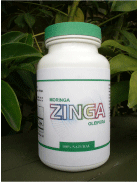 growing international interest among NGOs, scientists and the private sector, as a source of: food supplement, flocculent for water treatment, cosmetic oil, vegetable, fodder. Imagine a tree in your backyard that will meet all your nutritional needs, take care of you medicinally, and purify your water for you. This tree actually exists. For centuries, the natives of northern India and many parts of Africa have known of the many benefits of Moringa oleifera.
growing international interest among NGOs, scientists and the private sector, as a source of: food supplement, flocculent for water treatment, cosmetic oil, vegetable, fodder. Imagine a tree in your backyard that will meet all your nutritional needs, take care of you medicinally, and purify your water for you. This tree actually exists. For centuries, the natives of northern India and many parts of Africa have known of the many benefits of Moringa oleifera.
What is moringa?
Moringa is a tropical tree with multiple uses and which is resistant to drought. Among the 13 species known, Moringa oleifera is particularly easy to reproduce and its growth is very fast. The numerous economic uses of Moringa oleifera together with its easy propagation have raised growing international interest for this tree which originated from India and which is found in most tropical countries (Africa, Asia and America). Moringa stenopetala and other species from Eastern Africa and Madagascar also have potential even though they have been less exploited so far.
Latin name: Moringa Oleifera
English name: Drumstick (or)Horseradish tree
Moringa has 400 other names in different languages!
Zijaina – India, Horseradish – USA, Drumstick Tree – England, Ben Aile – France, Kalor – Indonesia, Murunga – Sri Langka, Nebeday – Senegal, Marango – Costa Rica, Ben – Puerto Rico
Moringa oleifera, commonly referred to simply as "Moringa" (from Tamil: Muringa and Malayalam: Murunggi, is the most widely cultivated species of the genus Moringa, which is the only genus in the family Moringaceae. It is an exceptionally nutritious vegetable tree with a variety of potential uses. The tree itself is rather slender, with drooping branches that grow to approximately 10 m in height. In cultivation, it is often cut back annually to 1 meter or less and allowed to regrow so that pods and leaves remain within arm's reach.
Moringa is native to the Sub-Himalayan tracts of India. It is an important crop in India, Ethiopia, Philippines, and the Sudan. It is being grown in Tropical Asia, Latin America, Africa, Caribbean, and the Pacific Islands. Over the past 2 decades, many reports have appeared in mainstream scientific journals describing its nutritional and medicinal properties.
High Nutrient Content
Unfortunately, even while science sings the praise of Moringa leaves, this vital information has not reached the people who need it most. Trees for Life is responding to this need, and you can help. If you don't have any Moringa planted, or cannot get access to fresh Moringa products, then at least get some Moringa Leaf Powder. It can be added to soups, casseroles, vegetables, smoothies, or just about anything you eat. The dried leaf powder is an incredibly easy way to get some potent nutrition into anyone who is not receiving the proper nutrients on a daily basis. For invalids, infants, the elderly, or those suffering from malnutrition for any reason, a few spoonsful of the leaf powder mixed into their food, effects a dramatic change in their overall health.
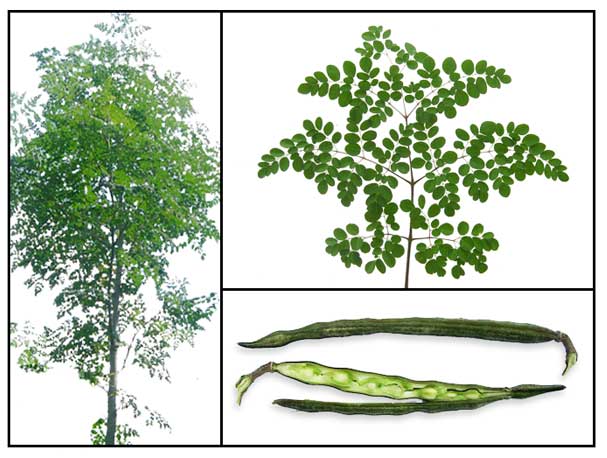
Moringa is an important food source in many countries. In India, Moringa pods are widely consumed and plantations exist to produce pods for export, fresh and tinned, to overseas consumers. In West Africa, Moringa oleifera leaves are commonly used to make sauces. Moringa stenopetala leaves are the staple food of the Konso people in Ethiopia. Studies have shown Moringa oleifera leaves to be an excellent source of vitamins, minerals and protein: perhaps more than any other tropical vegetable. Many programs use Moringa leaves to fight against malnutrition and its associated diseases (blindness etc.).
Moringa Contains Very High Antioxidants and Anti-inflammatory Compounds.
Antioxidants and anti-inflammatory compounds work best when combined with other antioxidants and anti-inflammatory agents. Nature allowed for a better efficacy when combined, a synergy of the compounds being much more effective than a single compound. Moringa contains the following antioxidants and anti-inflammatory compounds or compounds with antioxidant and anti-inflammatory characteristics.
Antioxidants:
Vitamin A, Vitamin C, Vitamin E, Vitamin K, Vitamin B (Choline), Vitamin B1 (Thiamin), Vitamin B2 (Riboflavin), Vitamin B3 (Niacin), Vitamin B6, Alanine, Alpha-Carotene, Arginine, Beta-Carotene, Beta-sitosterol, Caffeoylquinic Acid, Campesterol, Carotenoids, Chlorophyll, Chromium, Delta-5-Avenasterol, Delta-7-Avenasterol, Glutathione, Histidine, Indole Acetic Acid, Indoleacetonitrile, Kaempferal, Leucine, Lutein, Methionine, Myristic-Acid, Palmitic-Acid, Prolamine, Proline, Quercetin, Rutin, Selenium, Threonine, Tryptophan, Xanthins, Xanthophyll, Zeatin, Zeaxanthin, Zinc.
Anti-inflammatory compounds:
Vitamin A, Vitamin B1 (Thiamin), Vitamin C, Vitamin E, Arginine, Beta-sitosterol, Caffeoylquinic Acid, Calcium, Chlorophyll, Copper, Cystine, Omega 3, Omega 6, Omega 9, Fiber, Glutathione, Histidine, Indole Acetic Acid, Indoleacetonitrile, Isoleucine, Kaempferal, Leucine, Magnesium, Oleic-Acid, Phenylalanine, Potassium, Quercetin, Rutin, Selenium, Stigmasterol, Sulfur, Tryptophan, Tyrosine, Zeatin, Zinc.
There are over 46 antioxidants and 36 anti-inflammatory compounds all naturally occurring in the Moringa plant. This is why people prefer Moringa as the best natural source of anti-oxidants.
Vitamin & Mineral Content of Moringa
All values are per 100 grams of edible portion.
| Fresh Leaves | Dried Leaves | |
| Vitamin A | 6.78 mg | 18.9 mg |
| Thiamin (B1) | 0.06 mg | 2.64 mg |
| Riboflavin (B2) | 0.05 mg | 20.5 mg |
| Niacin (B3) | 0.8 mg | 8.2 mg |
| Vitamin C | 220 mg | 17.3 mg |
| Calcium | 440 mg | 2,003 mg |
| Calories | 92 cal | 205 cal |
| Carbohydrates | 12.5 g | 38.2 g |
| Copper | 0.07 mg | 0.57 mg |
| Fat | 1.70 g | 2.3 g |
| Fiber | 0.90 g | 19.2 g |
| Iron | 0.85 mg | 28.2 mg |
| Magnesium | 42 mg | 368 mg |
| Phosphorus | 70 mg | 204 mg |
| Potassium | 259 mg | 1,324 mg |
| Protein | 6.70 g | 27.1g |
| Zinc | 0.16 mg | 3.29 mg |
Protein 42%, Calcium 125%, Magnesium 61%, Potassium 41%, Iron 71%, Vitamin A 272%, and Vitamin C 22%. These numbers are particularly astounding; considering this nutrition is available when other food sources may be scarce.
Gram for gram, Moringa leaves contain:
7 times the vitamin C in oranges
4 times the calcium in milk
4 times the vitamin A in carrots
2 times the protein in milk
3 times the potassium in bananas
3 times the iron in spinach
Amino Acids in Moringa
Plants are an important source of proteins, but most plants actually supply the units making up the proteins – the amino acids. As you know, proteins together with lipids and carbohydrates are the three basic groups of biochemical substances of which plant and animal organisms are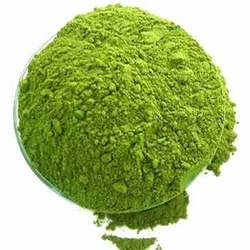 made. Again, amino acids are the building blocks or monomers of the proteins (which are long chains of amino acids linked together).
made. Again, amino acids are the building blocks or monomers of the proteins (which are long chains of amino acids linked together).
How Much Protein Do We Need?
Nutrition experts recommend that proteins (or amino acids) should account for 10-15% of the calories in a balanced diet, although requirements for protein are affected by age, health, weight, and other factors. Generally, a normal adult requires approximately 0.36 grams of protein per pound of body weight, or 0.8 grams per kg weight. That makes a total of 50-80 grams daily. Athletes have higher amino acid (protein) requirements, and babies need much more protein per body weight than do adults.
Proteins are digested by the gastro-intestinal system and then cut into smaller, simpler units (amino acids) that can be absorbed through the walls of the intestines and used by the body. After absorption, the liver and various tissues will make their own, specifically needed proteins. Thousands and thousands of complicated proteins make up the structure of cell walls, and the soluble particles in blood or less soluble structures of bone and skin. Proteins interact with each other and specifically recognize each other in order to perform all our physiological functions. Life can be seen as a complicated and beautiful dance of proteins! since proteins and other nitrogen-containing substances are continuously degraded and rebuilt, they must be replaced by a continuous supply of amino acids from the diet.
There are 20 amino acids present in the human body structures. (Actually, in nature there are more amino acids). Of those, 9 are known to be ESSENTIAL; they have to be supplied by the diet since the human body cannot synthesize them, as it does with the other 11 amino acids. Few foods, like Moringa, are known to contain all essential amino acid, hence, the importance of a complex, rich diet. The 9 essential amino acids are: histidine, isoleucine, leucine, lycine, methonine, phenylalanine, threonine, tryptophan and valine. Histidine is considered essential for children and babies, not for adult. Strict vegetarians should ensure that their diet contains sufficient amounts of all these amino acids.
Moringa is one of the very few plants that contain all the essential amino acids, although two of them, lysine and tryptophan, are poorly represented in most plants. Moringa's essential amino acids presence and digestibility scores are more than adequate when measured against the standards of World Health Organization (WHO), Food and Agriculture Organization (FAO) and United Nations Organization (UNO) for small children, the most at-risk population group when it comes to protein in food.
The Essential Amino Acids of Moringa and Briefly Explain Their Importance for Human Health.
Histidine - Moringa leaves contain histidine, a semi-essential amino acid - adult generally produce adequate amounts but children usually may not. It is believed that histidine may increase the body resistance to environmental toxins and allergens (factors that trigger allergies in susceptible persons). Since histidine found abundantly in hemoglobin - the respiratory pigment protein needed for oxygen transportation to every cell – histidine aids in the prevention of anemia.
Histidine is also a mild vasodilator and helps increase blood circulation. According to some research, people with rheumatoid arthritis have low levels of histidine; therefore it has been used in the treatment of rheumatoid arthritis. A deficiency of histidine can also cause poor of hearing. Since histidine is found in numerous proteins, its presence is needed for normal general physiology.
Isoleucine - Moringa contains isoleucine in large amounts. Its main role in the body is related to its incorporation into many proteins and enzymes. This is one of the essential amino acids needed for hemoglobin formation, as is histidine. Therefore, its presence is useful for the prevention or treatment of anemia. Isoleucine plays a role in optimal growth during childhood;babies and children need much more isoleucine per body weight than adults! It also maintains normal blood sugar and energy levels and therefore it is particularly important for diabetics. Isoleucine is metabolized in muscle tissue and can enhance energy levels and increase endurance. Athletes and everyone exercising regularly need extra isoleucine.
Leucine - This is another essential amino acid related to isoleucine and valine, all vital for normal growth in children. Moringa contains large amounts of leucine as well. These three amino acids work together to protect muscles, build muscles, and enhance energy levels and stamina. They also promote bone, skin and muscle tissue healing and therefore are recommended for those recovering from injuries, stress or surgery.Leucine may help to lower elevated blood sugar levels, which is important for diabetics. For normal growth, small children and babies need much more leucine per body weight than adults. Leucine also aids in increasing growth hormone production.
Lysine - Lysine is required for normal growth and development in children, who need vast amounts of this amino acids. Although plant sources are usually poor in lysine.Moringa leaves are quite rich in this essential amino acid. Lysine helps calcium absorption and bone development, and maintains proper protein balance. Lysine also aids in the production of antibodies[ protective proteins of the immune system], hormones and enzymes, in skin maintenance and formation, and tissue repair .Since it helps to build muscle protein, lysine is necessary for those recovering from stress, injuries and surgery. In people with “bad” serum fats and high cholesterol, lysine lowers high serum triglyceride levels.
Another useful quality of lysine is its capacity to inhibit the multiplication of viruses, especially herpes viruses.
Methionine and Cystine - These are important sulfur-containing amino acids. Cystine is the stable form of the sulfur-containing amino acid cysteine. The body readily converts one into the other as needed, therefore the two forms can be considered as a single amino acid in metabolism. Sulfur-containing amino acids are involved in detoxification of the organism; they help to neutralize and eliminate harmful toxins and protect the body against radiation damage caused by UV rays and x-rays .They are free radical destroyers, and work best when taken with selenium and vitamin E ( see "Antioxidants in Moringa" ). Cystine helps to protect the river and brain from damage due to toxics such as alcohol , drugs, and environmental pollutants.
Methionine and cystine are main constituents of the proteins of fingernails, skin and hair; they promote proper elasticity and texture of the skin and hair. Ladies, real beauty comes from the inside, and sulfurcontaining amino acids must surely be ingredients of any diet that fights skin aging!
Cystine may have anti-inflammatory properties that can be helpful in the treatment of osteoarthritis and rheumatoid arthritis. Cystine and metheonine are recommended to be supplemented in the treatment of some forms of cancer. These two amino acids also promote wound healing; therefore they are helpful after surgery and burns. They are known to bind iron, aiding in iron absorption. For those interested in losing weight, it is worth mentioning that cystine also promotes the burning of fat and the building of muscle.
Phenylalanine and Tyrosine - These two essential amino acids, well represented in Moringa leaves, are particularly important for the health of the central nervous system. Once in the body, phenylalanine can be converted into tyrosine, which in turn is used to synthesize two key brain transmitters that promote alertness: dopamine and norepinephrine. These two amino acids – phenylalanine and tyrosine – can therefore elevate mood, decrease pain, help with memory and even suppress appetite.
Phenylalanine and tyrosine should be supplemented in the treatment of depression, arthritis, obesity and Parkinson’s disease. Phenylalanine is effective for controlling pain, especially the chronic pain in osteoarthritis and rheumatoids arthritis, according to some studies. Similar to other amino acids, these two are incorporated in a variety of proteins throughout the body.
Threonine - Threonine is also very well represented in Moringa, although its content is usually low in many grains and other plant protein sources. This amino acid is important for the formation of collagen and elastin, two main proteins of the skin. It also helps to protect the liver and has a lipotropic function (against fatty liver). Threonine is present in high concentrations in the heart, central nervous system and skeletal muscle. It maintains their health and normal functions. It also enhances the immune system by aiding in the production of antibodies, and promotes thymus (a gland vital for the function of the immune system) growth and related activity. Other vital nutrients are also better absorbed when threonine is presen in the food. Some use threonine supplements in certain cases of depression. Infants need much more (8 times) threonine per body weight than adults.
Tryptophan- An essential amino acid, tryptophan is required for the production of niacin ( vitamin B3) and serotonin (the neurotransmitter involved in relaxation and sleep) among others. Therefore, tryptophan helps to control depression and insomnia, stabilizes emotional moods, and it also eases perception of pain, and might combat inflammation. It also aids to control hyperactivity in children and alleviates stress. Although tryptophan is the rarest of all amino acids to be found in protein’s composition, it plays an important role in reducing stress-related mood disorders, and helps relaxation and good sleep! We all need some extra tryptophan sometimes! Supplements of tryptophan are not approved in the USA, so, when needed, we have to get it from food. Moringa is an excellent plant source of tryptophan, and its concentration in the leaves exceeds the concentration in soy beans. Since some migraine sufferers have abnormally low levels of tryptophan, it is believed that tryptophan can also ease the pains as sociated with certain types of migraines.
Valine - unlike tryptophan, valine has a stimulant effect. It is needed for muscle metabolism and structure, general tissue repair and the maintenance of a high concentrations in muscles, similar to related amino acids, isoleucine and leucine. These three branched-chain amino acids can be used as an energy source by muscle tissue, thus preserving the use of glucose and supplying stamina. Studies have shown that these amino acids are useful in restoring muscle mass in people with liver disease, or after physical stress, injuries and surgery. Moringa leaves are at least as rich (if not more) as soy beans (and soy protein concentrate) in valine.
Moringa is one of the very few plant sources that contain all 9 essential amino acids.
Moringa’s essential amino acids presence and digestibility are as good as soy (one of the best protein sources). Soy is often a highly processed product while Moringa is presented in its natural state.
Moringa’s essential amino acids presence and digestibility are better than those required by the standards of WHO, FAO and UNO. Moringa, even in small portions, provides adequate amounts of protein nutrients for everyone, including healthy or medically compromised individuals, children, senior adults, lactose intolerant individuals, vegetarians and people with soy allergies.
Amino Acid Content of Moringa
All values are per 100 grams of edible portion.
| Fresh Leaves | Dried Leaves | |
| Arginine | 406.6 mg | 1,325 mg |
| Histidine | 149.8 mg | 613 mg |
| Isoleucine | 299.6 mg | 825 mg |
| Leucine | 492.2 mg | 1,950 mg |
| Lysine | 342.4 mg | 1,325 mg |
| Methionine | 117.7 mg | 350 mg |
| Phenylalinine | 310.3 mg | 1,388 mg |
| Threonine | 117.7 mg | 1,188 mg |
| Tryptophan | 107 mg | 425 mg |
| Valine | 374.5 mg | 1,063 mg |
Moringa is not genetically modified or altered by humans.
Moringa is considered to have the highest protein ratio of any plant so far identified!
The immature green pods called “drumsticks” are probably the most valued and widely used part of the tree. They are commonly consumed in India and are generally prepared in a similar fashion to green beans and have a slight asparagus taste. The seeds are sometimes removed from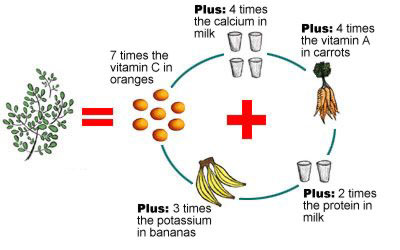
more mature pods and eaten like peas or roasted like nuts. The flowers are edible when cooked, and are said to taste like mushrooms. The roots are shredded and used as a condiment in the same way as horseradish; however, it contains the alkaloid spirochin, a potentially fatal nerve-paralyzing agent, so such practices should be strongly discouraged.
The leaves are highly nutritious, being a significant source of beta-carotene, Vitamin C, protein, iron, and potassium. The leaves are cooked and used like spinach. In addition to being used fresh as a substitute for spinach, its leaves are commonly dried and crushed into a powder, and used in soups and sauces. Murungakai, as it is locally known in Tamil Nadu and Kerala, is used in Siddha medicine. The tree is a good source for calcium and phosphorus. In Siddha medicines, these drumstick seeds are used as a sexual virility drug for treating erectile dysfunction in men and also in women for prolonging sexual activity.
The Moringa seeds yield 38–40% edible oil (called ben oil from the high concentration of behenic acid contained in the oil). The refined oil is clear, odorless, and resists rancidity at least as well as any other botanical oil. The seed cake remaining after oil extraction may be used as a fertilizer or as a flocculent to purify water.
The bark, sap, roots, leaves, seeds, oil, and flowers are used in traditional medicine in several countries. In Jamaica, the sap is used for a blue dye.The flowers are also cooked and relished as a delicacy in West Bengal and Bangladesh, especially during early spring. There it is called sojne ful and is usually cooked with green peas and potato.
Use
Moringa trees have been used to combat malnutrition, especially among infants and nursing mothers. Three non-governmental organizations in particular — Trees for Life, Church World Service, and Educational Concerns for Hunger Organization — have advocated Moringa as “natural nutrition for the tropics.” Leaves can be eaten fresh, cooked, or stored as dried powder for many months without refrigeration, and reportedly without loss of nutritional value. Moringa is especially promising as a food source in the tropics because the tree is in full leaf at the end of the dry season when other foods are typically scarce.
A large number of reports on the nutritional qualities of Moringa now exist in both the scientific and the popular literature. It is commonly said that 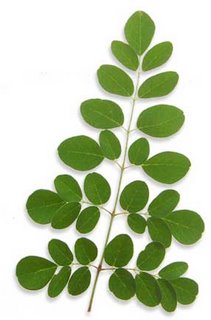 Moringa leaves contain more Vitamin A than carrots, more calcium than milk, more iron than spinach, more Vitamin C than oranges, and more potassium than bananas,” and that the protein quality of Moringa leaves rivals that of milk and eggs. However, the leaves and stem of M. oleifera are known to have large amounts of their calcium bound in calcium oxalate crystals, which is not a form of calcium available to the body. Whether the claim of "more calcium than milk" includes this non-bioavailable calcium needs to be addressed. The oral histories recorded by Lowell Fuglie in Senegal and throughout West Africa report countless instances of lifesaving nutritional rescue that are attributed to Moringa. In fact, the nutritional properties of Moringa are now so well-known that there seems to be little doubt of the substantial health benefit to be realized by consumption of Moringa leaf powder in situations where starvation is imminent. Nonetheless, the outcomes of well-controlled and well-documented clinical studies would still be clearly of great value.
Moringa leaves contain more Vitamin A than carrots, more calcium than milk, more iron than spinach, more Vitamin C than oranges, and more potassium than bananas,” and that the protein quality of Moringa leaves rivals that of milk and eggs. However, the leaves and stem of M. oleifera are known to have large amounts of their calcium bound in calcium oxalate crystals, which is not a form of calcium available to the body. Whether the claim of "more calcium than milk" includes this non-bioavailable calcium needs to be addressed. The oral histories recorded by Lowell Fuglie in Senegal and throughout West Africa report countless instances of lifesaving nutritional rescue that are attributed to Moringa. In fact, the nutritional properties of Moringa are now so well-known that there seems to be little doubt of the substantial health benefit to be realized by consumption of Moringa leaf powder in situations where starvation is imminent. Nonetheless, the outcomes of well-controlled and well-documented clinical studies would still be clearly of great value.
In many cultures throughout the tropics, differentiation between food and medicinal uses of plants (e.g. bark, fruit, leaves, nuts, seeds, tubers, roots, and flowers), is very difficult because plant uses span both categories, and this is deeply ingrained in the traditions and the fabric of the community.
- For food, overcoming malnutrition, or just improving overall health - Moringa provides extreme nourishment to the human body. As stated elsewhere on the site, Moringa is one of the few things in the plant kingdom that supplies all 8 of the essential amino acids, that sustain human life. Simply eat the leaves, flowers, seeds, and pods.
- For oil - extract the oil from the seeds, for cooking, and lubrication.
- For purifying water - the seeds are an excellent vehicle.
- As an antibiotic - the crushed seeds are even effective against the skin-infecting bacteria Staphylococcus and the dreaded E. coli.
- Skin Treatment - The healing benefits of moringa on the skin are amazing. It helps to cure cuts, rashes, sores, and scrapes. Cracking of the skin and other signs of aging are also positively affected. Most notably, teenagers have been able to cure acne in three days!
- WE like the way it grows hair - in areas where you have lost it over the years!
- Diabetes - Moringa is not as effective as glibenclamide, the standard drug for hypoglycemia. But pure powdered moringa leaf has been shown, within three hours of ingestion, to lower blood sugar levels. When larger doses were taken the effect increased.
Another area of folklore which research supports is in cancer treatment. Moringa species have long been recognized by folk medicine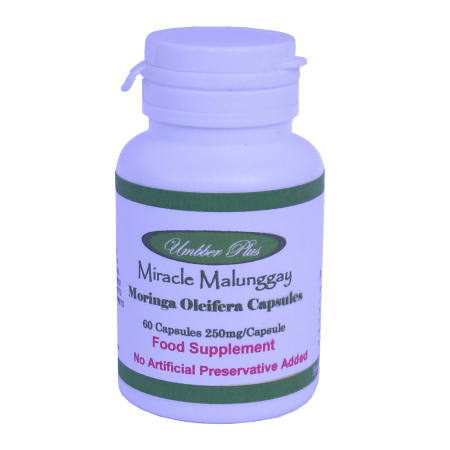 practitioners as having value in the treatment of tumors. Studies examined certain compounds for their cancer preventive potential. Recently two of these compounds were shown to be potent inhibitors of activation of lymphoblastoid (Burkitt’s lymphoma) cells. One of these compounds also inhibited tumors in mice bred to be prone to tumors. In another study, Bharali and colleagues examined skin tumor prevention following ingestion of drumstick (Moringa seedpod) extracts. In this mouse model, which included appropriate positive and negative controls, a dramatic reduction in skin tumors was demonstrated. More rigorous study is required in order to achieve a level of proof required for full medical endorsement of Moringa as, in this case, a cancer preventative plant.
practitioners as having value in the treatment of tumors. Studies examined certain compounds for their cancer preventive potential. Recently two of these compounds were shown to be potent inhibitors of activation of lymphoblastoid (Burkitt’s lymphoma) cells. One of these compounds also inhibited tumors in mice bred to be prone to tumors. In another study, Bharali and colleagues examined skin tumor prevention following ingestion of drumstick (Moringa seedpod) extracts. In this mouse model, which included appropriate positive and negative controls, a dramatic reduction in skin tumors was demonstrated. More rigorous study is required in order to achieve a level of proof required for full medical endorsement of Moringa as, in this case, a cancer preventative plant.
This tree is truly a “miracle” tree offering hope; nutritionally, medicinally and economically to devastatingly
poor 3rd world countries.It has just recently begun being used as a supplement in a juice form and in powdered leaf tablets.
![]()
Disclaimer: This website is for information purposes only. By providing the information contained herein we are not diagnosing, treating, curing, mitigating, or preventing any type of disease or medical condition. Before beginning any type of natural, integrative or conventional treatment regime, it is advisible to seek the advice of a licensed healthcare professional.




















